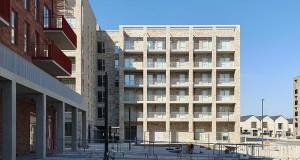
- Design Approaches
- Posted
RIBA: passive house represents big growth area for British architects
The Royal Institute of British Architects said that, despite some growing pessimism among architectural practices about business prospects, passive house design represents a new and exciting growth area that offers added value for architectural firms.
According to the RIBA Future Trends Workload Index, levels of optimism among architectural practices fell between November and December last year, with medium-sized firms being the most pessimistic.
“It is clear that whilst overall workloads continue to grow the environment is highly competitive,” said RIBA executive director Adrian Dobson. “Practices have commented on the growing interest from clients in design to passive house standards, and this is no longer limited to domestic projects. There seems to be plenty of evidence that knowledge of passive house increasingly carries added value in the market for architectural services.”
He also added that the wider reduction in optimism may just haven be down the lower number of enquiries typically received by practices at the end of the calendar year.
Speaking to Passive House Plus, executive director of the Passivhaus Trust Jon Bootland welcomed the RIBA reports.
“It’s very exciting to note clients’ growing interest in passive house,” Bootland said. “We’ve certainly seen a rapid increase in the numbers of passive house buildings being commissioned each year – from the first in 2009 to almost 500 by the end of 2015. We’re also seeing more unusual schemes coming through around the country, such as a swimming pool and leisure centre being planned in Exeter and a medical school which was recently completed and certified in Leicester.”
Bootland added that he wasn’t surprised to hear RIBA reporting that passive house expertise carries additional value for architectural practices.
“Passive house is the one standard that gives a high degree of certainty in terms of energy performance. Practices that can show their knowledge and experience in this area will be seen to be at the forefront of current good practice – this will help to reinforce their leading-edge credentials in other areas as well.”







